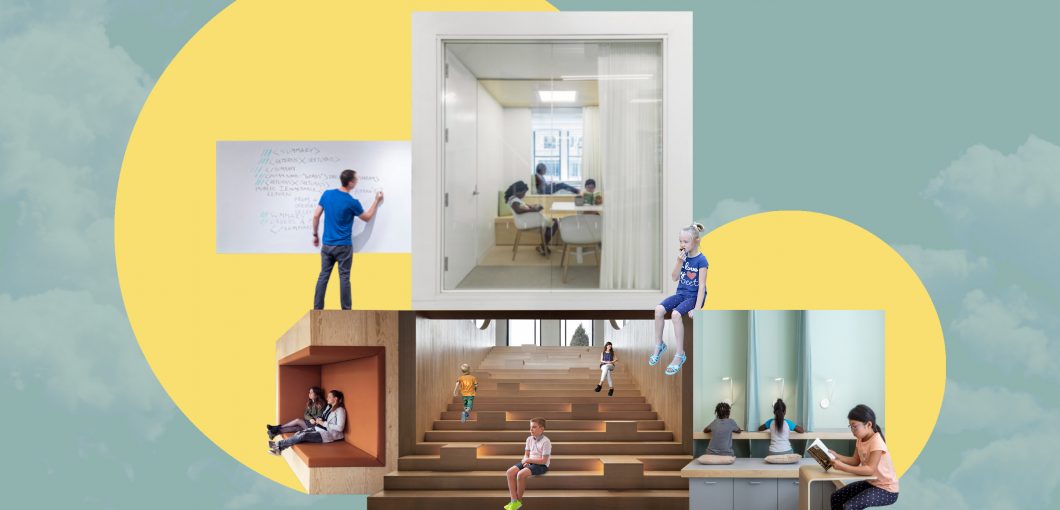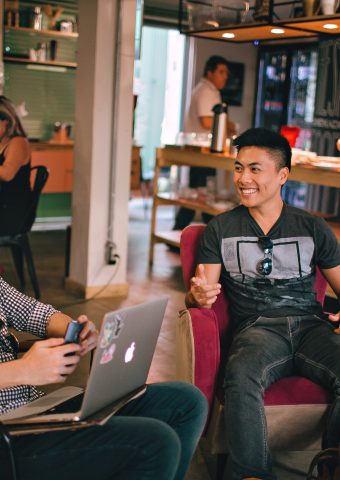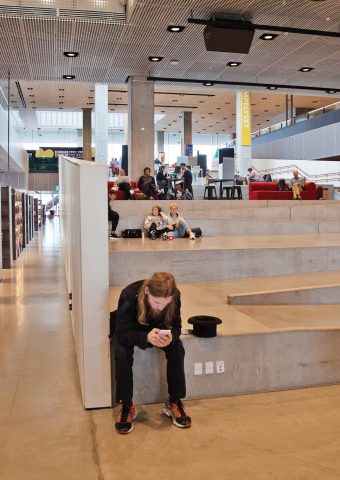
Spatial Variety is a Must to Unleash Creative Thinking
Whether developing AI or designing solutions for climate change, if students need to think creatively, they’ll often have a limited number of very distinct choices of where to go while on campus. They could head to their usual classroom, the library, or perhaps the student union. But how do those spaces fair when it comes to unleashing creativity? Researchers Mark Bieraugel and Stern Neill decided to find out.
By surveying over 200 students at a number of locations across a mid-sized university campus, they were able to ascertain which spaces fostered creative thinking. The spaces they focused on were the library, communal tables, a quiet study area, a computer lab, ‘fishbowls’ (glass-walled spaces with communal tables), the comfortable atrium area, a greenspace, a ‘maker space’, and the student union. In order to rank the spaces, the researchers first identified seven key variables which are necessary for creative thinking: exploration, exploitation, observation, questioning, experimentation, networking, and reflection.
Some may predict that the level of creativity would depend entirely on the student and how they prefer to work, but Bieraugel and Neill found that the spaces themselves had a surprisingly significant impact. The library, for example, ranked high in helping students to exploit existing ideas but low in exploring new ideas. The quiet study area and computer lab ranked similarly low in exploring new ideas; suggesting that they’re great spaces for learning what’s already out there but not as good when it comes to generating ideas.
The maker space, full of tools, materials and 3D printers, ranked high for experimentation but low for reflection due to the crowded space. The calm surroundings of the atrium and the greenspace, meanwhile, were classed as the ideal spaces for reflection but not for experimentation.
Over at the communal tables, students were able to network successfully but the noise and disruption made questioning and reflection impossible, much like in the student union. The Fishbowl, on the other hand, turned out to be a great spot for six out of seven of the key variables (all but networking).
So, what does this tell us? By looking at learning spaces in a new light, with creativity in mind, the researchers uncovered that while some existing spaces rank pretty high, the real key is choice. There are so many stages to the creative process that it can’t just happen in one spot. Students need access to quiet spaces, communal spaces and well-stocked experimental spaces but often they have to cross from one side of the campus to the other in order to tick all those boxes. Imagine the level of creativity that could flourish if they were all available under one roof, allowing students to flit from one to the other as the mood strikes.
Read the full research paper here.




Comments
Tell us what you think